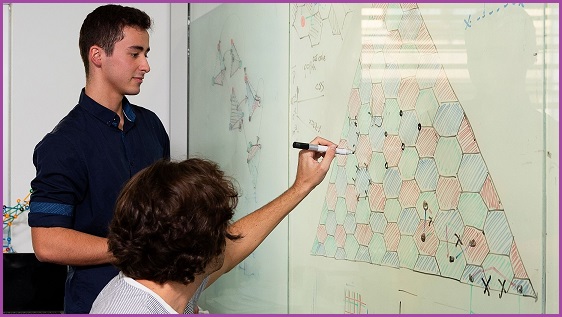An undergraduate student at the University of Sydney has made a breakthrough in quantum computing error correction that is drawing international attention.
Pablo Bonilla Ataides, a 21-year-old science student, helped discover a new way to ensure information encoded into quantum computers can be stored, manipulated, and maintained in a fault-tolerant way.
“In second-year physics, I was asked to look at some commonly-used error correcting code to see if we could improve it,” he said.
“By flipping half of the quantum switches, or qubits, in our design, we found we could effectively double our ability to suppress errors.”
The error-correction process, described in an article co-written by Bonilla that was published in Nature this week, has been incorporated by Amazon Web Services (AWS) as it develops quantum computing capabilities.
Senior quantum research scientist at AWS, Dr Earl Campbell, said he was “surprised” by the new method of error correction.
“I was amazed that such a slight change to a quantum error correction code could lead to such a big impact in predicted performance,” he said.
Error correction – the ability to spot and fix small but potentially catastrophic errors in computational information – is extremely important in quantum computers due to the ability for qubits, or quantum bits, to operate in superpositional (both 1 and 0) and entangled states.
But these quantum states are extremely delicate which makes the kinds of interaction usually necessary for error correction, such as observing bits, almost impossible without causing ‘decoherence’ in the system.
Current quantum computers often use ‘surface codes’ for error correction and fault-tolerance.
Surface codes are an architecture of quantum computational design in which a set of adjacent qubits are used to ensure the main stack of logical quantum gates does not decohere or fall into error.
The result is a system in which much of the information being processed is dedicated to error correction, rather than working on the computational task.
Bonilla and his tenured co-authors have created a more scalable surface code – the “XZZX” surface code – that will be able to counteract quantum decoherence as more qubits and gates are added to the system.
Professor Stephen Bartlett, one of Bonilla’s co-authors, said he expects the new error-correction model to be widely used in future quantum computing experiments.
“What’s great about this design is that we can effectively retrofit it to the surface codes being developed across the industry,” he said.
“We are optimistic that this work will help the industry build better experimental devices.”
It’s not the first major quantum breakthrough to come from the University of Sydney.
Earlier this year, the university’s joint partnership with Microsoft resulted in the development of a specialised chip to interact with qubits and quantum gates closer to the sub-zero temperatures they typically operate in.
Australia’s quantum computing ecosystem is expected to bring 16,000 new jobs and will become a key part of the nation’s economy by 2040.
Sovereign quantum capability is being championed by the Pawsey Supercomputing Centre in Western Australia that is looking to install a world-first room-temperature quantum device later this year.










